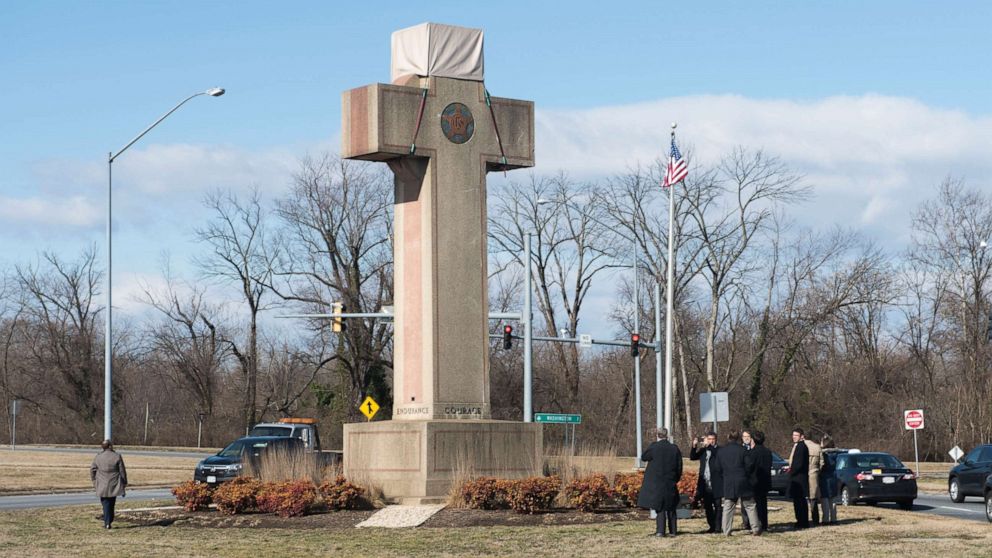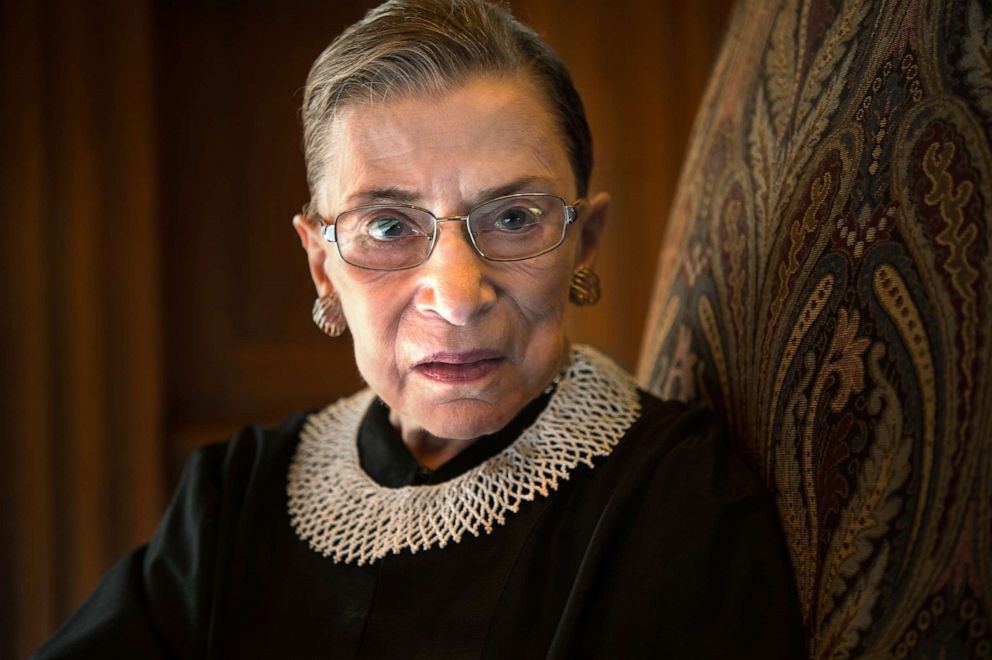Supreme Court allows war cross memorial to stand as symbol of 'sacrifice'
Justices Ginsburg and Sotomayor dissented.
The Supreme Court on Thursday said a 40-foot, 16-ton Latin cross war memorial in Bladensburg, Maryland, can stand, upholding the constitutionality of a religious symbol on public land, but stopping short of creating a clear new standard for evaluating similar displays nationwide.
"Although the cross has long been a preeminent Christian symbol, its use in the Bladensburg memorial has a special significance," Justice Samuel Alito wrote in an opinion for the majority.
"Its removal or radical alteration at this date would be seen by many not as a neutral act but as the manifestation of a 'hostility toward religion that has no place in our Establishment Clause traditions,’” Alito said.
The Establishment Clause of the First Amendment says that "Congress shall make no law respecting an establishment of religion" but the exact meaning and intent of the phrase remain widely debated.
The decision was 7-2. Justices Ruth Bader Ginsburg and Sonia Sotomayor dissented.

The cross, erected in 1925 as a memorial to 49 fallen World War I soldiers, was first built on private property using private funds but decades later was incorporated into state parkland maintained with taxpayer dollars.
Three local residents filed suit in federal court in 2014 seeking to have the monument removed from public property or modified into a non-religious memorial.
Justice Ruth Bader Ginsburg took the rare step of reading her dissent from the bench, a sign of strong opposition to the ruling. Her opinion also included an appendix with photographs of non-religious war memorials that could have been alternatives.
"The Constitution demands governmental neutrality among religious faiths, and between religion and nonreligion,” Ginsburg said from the bench. “Today the Court erodes that principle, diminishing precedent serving to preserve it.”

Ginsburg, who a court spokeswoman said has been suffering a cold and laryngitis, sounded much better than she did on Monday, when her voice was raspy and strained.
The case had raised the prospect that hundreds of historic war memorials and government buildings bearing religious imagery could face new restrictions, but the court’s decision affirms that the symbols are part of the fabric of the nation and can pass Constitutional muster.
“The court today applies a history and tradition test in examining and upholding the constitutionality” of the cross, Justice Brett Kavanaugh wrote in a concurring opinion. “The practice of displaying religious memorials, particularly religious war memorials, on public land is not coercive and is rooted in history and tradition.”
Alito argued that there should be a blanket “presumption of constitutionality for longstanding monuments, symbols and practices,” a view supported by three other justices, but just short of the majority needed to establish a precedent-setting new rule.
The Supreme Court's years of decisions on the religious symbols and the First Amendment have been highly fact-based, varied and inconsistent.
Does the Constitution only prohibit religious displays that "coerce" obedience to a religion, or those that simply "promote" or "endorse" one religion over another? What amounts to "excessive entanglement" between government and a particular religion? The justices grappled with those questions -- and left them unanswered.
“This is a landmark victory for religious freedom,” said Kelly Shackelford, president of First Liberty, an advocacy group defending the cross. “Our Founders would have been appalled at this attempt to make the government hostile to our religious heritage, history, and symbols. The attempted perversion of our Constitution is now over, and every American now has more freedom than they have had in decades, with a government no longer hostile to people or expressions of faith.”
The Trump administration praised the decision as a "win for protecting religious freedom and American historical tradition."
Opponents of the Bladensburg memorial lamented the court's ruling as discriminatory and wrong.
“The Supreme Court’s misguided decision to allow government to play favorites and prominently display religious symbols as public war memorials dishonors our country’s veterans and the fundamental principle of religious freedom they fought and died for," said Rachel Laser, president and CEO of Americans United for Separation of Church and State. "The towering Bladensburg Cross is an inherently Christian symbol that excludes thousands of non-Christian veterans and ignores the tremendous sacrifices they made."
“Just because something is a tradition doesn’t make it right," Laser added.




